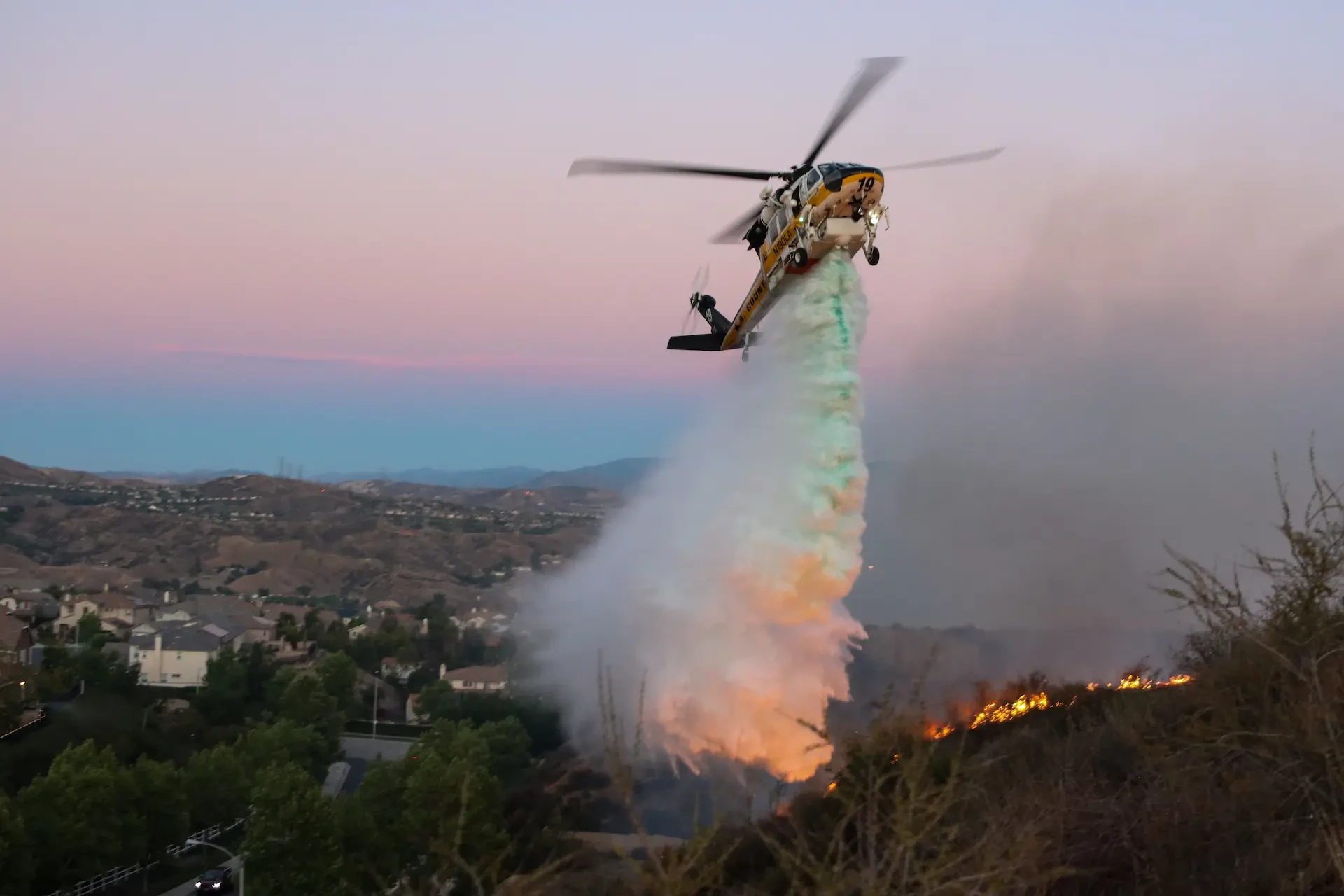The UH-60 Black Hawk is one of the safest and most robust helicopters ever built but because it has a military certification, in civilian hands it is placed in the Restricted Category. Regulators such as Australia’s CASA, have deemed helicopters in the restricted category an unacceptable risk to safety in passenger carrying operations. Despite Heads of State including the US President flying in Black Hawks, the civilian regulators have somehow deemed the Black Hawk ‘unsafe’ to carry firefighters.
Unacceptable Risk?
In October 2020, the Sydney Morning Herald reported that the Civil Aviation Safety Authority (CASA) (Australia), the Australian aviation regulator declared in communications to the New South Wales(NSW) Rural Fire Service (RFS) Commissioner regarding the use of the Black Hawk for carrying firefighters that, “CASA considers the use of a restricted category helicopter in passenger-carrying operation creates an unacceptable risk to safety”. The senior official said aircraft designed to military specifications, “traditionally did not cover areas such as passenger safety to the same extent as the civil standards”. Bolstering the CASA position, the US Federal Aviation Administration (FAA) also does not allow the carriage of firefighters in UH-60 helicopters certificated under restricted category.
The statement that restricted category aircraft are an ‘unacceptable risk to public safety’ what appears to be either a poor appreciation some regulatory authorities may have of military aircraft certification or is just a desire to blindly apply rules without considering the applicable circumstances, particularly in this case, the Black Hawk helicopter. The Black Hawk was built to Mil Std 1290 and in many ways, that certification exceeds civil requirements in areas such as engine reliability, handling, and crash survivability. To say the helicopter is ‘unsafe’ is plainly incorrect.
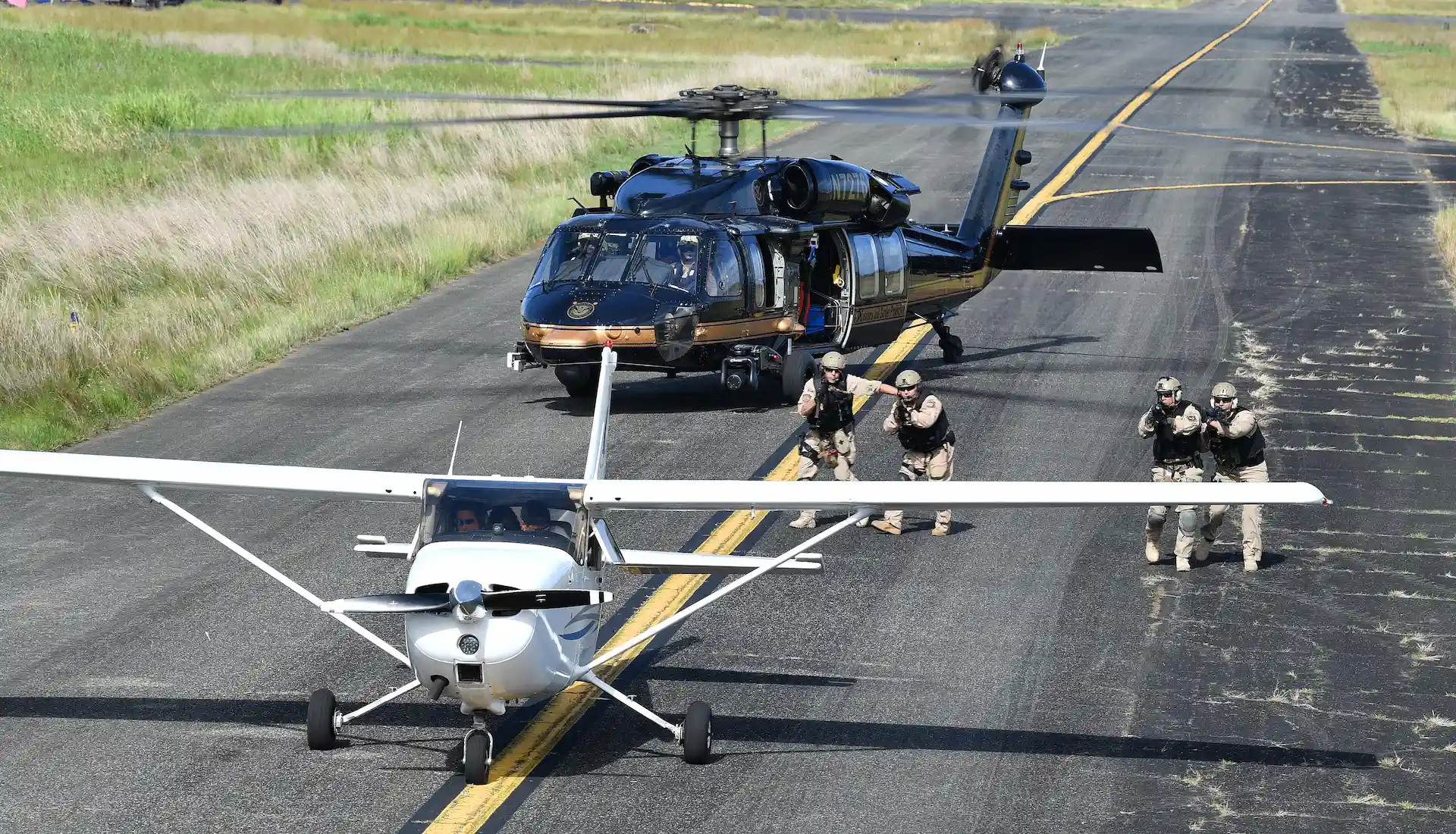
Commissioner Rob Rogers leads the NSW Rural Fire Service in Australia. The RFS is responsible for the state of New South Wales bush- (Wild) firefighting efforts. He leads an organization that has over 76,000 volunteer firefighters and owns, aviation-wise, a myriad of aircraft from BK117 helicopters to a 737 Fireliner. To provide some perspective of the challenge facing the RFS, NSW is about twice the size of California, covering over 310,000 square miles (over 801,000 Square kilometres).
The Australian Army is about to release it S-70A-9 Black Hawk helicopters from service as it transitions to the MRH-90. In doing so, the Australian Government has offered the RFS several helicopters to operate in supporting firefighting efforts. Commissioner Rogers has some firm ideas on the Black Hawk and its suitability for carrying firefighters. “When we look back to 2019/2020 fire season, the Australian Defence Force (ADF) were flying that particular type of helicopter with our firefighters on board, winching them into fires and rescuing people – doing the exact type of the work that we would be doing with them,” he pointed out.
“It is particularly hard for our firefighters, the public and indeed myself to understand why when ADF (Australian Defence Force) is flying the Black Hawks those activities are permissible, but if they are transferred to us then it is no longer deemed an acceptable risk?” “That’s something that the public would struggle understand; myself included. I certainly don’t understand the difference. “ The Black Hawk comes in many models. It is a Sikorsky S70 helicopter that in the US Army was designated the UH-60. So the S70 and the UH-60 are both ‘Black Hawks’.
Downey Aviation Services is an independent consultant firm specializing in aviation and civil certification issues in the USA. More importantly Dave Downey’s resume’ reads as though he is someone who should be listened to. After all, he is a former FAA Flight Analyst Designated Engineering Representative (DER) and is a specialist in international and domestic certification with Federal Aviation Administration, Transport Canada Civil Aviation, European Aviation Safety, CAAC China. He also chaired the Bell Product Safety Board – the board served as the clearing house for Bell safety disposition of civil and military flight-critical and safety-of-flight parts and Experimental/R&D flight test incidents. A recipient of the Tony LaVier Award, Society of Experimental Test Pilots for Lifetime Achievement in Flight Safety, from 2001 to 2008, Dave Downey was the Manager of the FAA Rotorcraft Directorate. He commented, “the UH-60 should be able to carry passengers, attendant to the operations and anyone who says the H-60 series is unsafe is uninformed and wrong”.
“The UH-60 series is one of the safest helicopters in the world. The crash dynamics and cabin/cockpit safety zones cannot be rivalled in any older commercial helicopters,” he said. He feels that The FAA struggles with making legitimate risk-based assessments when there are lawyers involved. “All exemptions or equivalent-level-of-safety get legal review. The General Counsel’s Office will stop a good idea based on the fear that any ‘good’ idea will set a precedent that will be utilized in another application.”
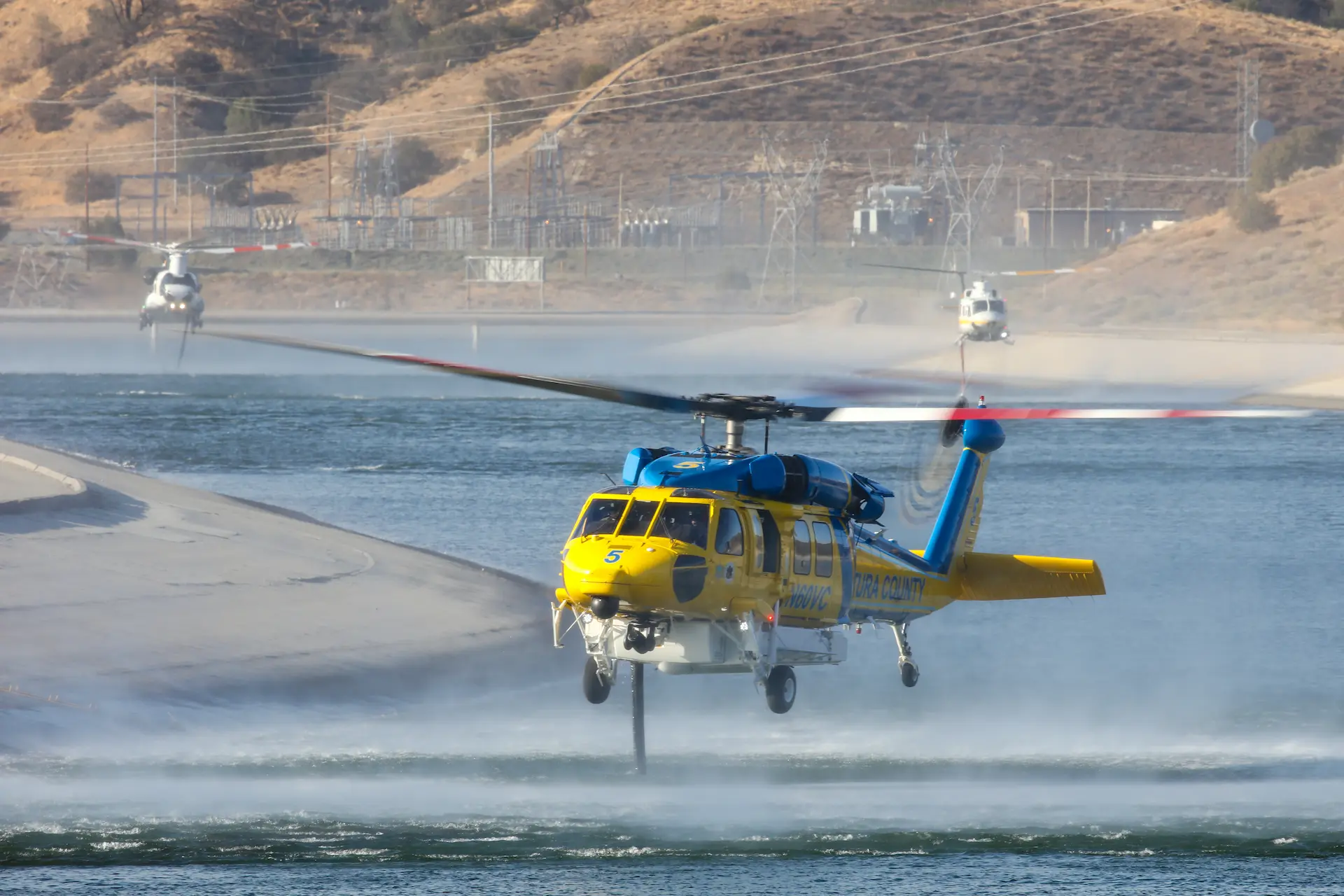
Travis Storro has been involved in aircraft maintenance and operations for about the last 20 years. He started his career working on military surplus logging helicopters (HH-43 Huskie) while learning to fly airplanes. He runs a company (Gale Solutions, LLC), also in the USA, that helps people achieve the FAA certification of their products. He also spent 4 years as the chairman of HAI's Restricted and Experimental Category Working Group advocating for Restricted Category helicopters. The working group was trying to find ways to expand the aircraft operational capabilities and consider regulatory issues to be the primary thing hindering their potential. Ultimately, he felt that at this time, relying on FAA oversight would be inadequate and to rely on operators' individual standards to ensure the safety of transporting ‘passengers’ aboard the UH-60 may also not be the answer either. He pointed out that the first Hawks introduced into civilian service were S-70A and S-70C operated by Firehawk (Brainerd) Helicopters, and these aircraft received Restricted Category certification as "Military Derivative" aircraft, rather than as "Military Surplus." “The FAA differentiates between these two slightly, in that the Military Derivative aircraft were manufactured new,” he said, “and never saw US military service.” The basis of their certification is still related to the satisfactory service history of the equivalent military model, but their continued airworthiness and operational service life is overseen by the OEM (Original Equipment Manufacturer), which isn't the case with Military Surplus aircraft.
He highlighted that with military surplus, the rules have been around for a long time. “In a nutshell, the regs allow anyone to obtain a Restricted Category Type Certificate (RCTC)”, if they can demonstrate to the FAA that: The aircraft make/model has at least a 10-year satisfactory service history in the US Armed Forces. No feature or characteristic of the aircraft makes it unsafe while performing the special purpose operations it is certificated to perform. Adequate operating and maintenance instructions are provided to ensure continued operational safety. (Based on the military manuals of course.)
With regard to the special purpose operations, the FAA has defined these in their guidance, and it gives a number of different uses for which certification can be applied. “The clincher for the Black Hawk is that it has never had compliance to Part 36 noise requirements shown, and therefore is only eligible for the special purpose operations that are exempted from Part 36 compliance.” These are:
Agricultural Aircraft Operations (Part 137),
Forest and Wildlife Conservation (limited to the aerial dispensing of firefighting material such as retardant or water), and
Rotorcraft External Load Operations. (Part 133)
Now to restrict the operation of an aircraft for carrying firefighters due to noise rules appears unreasonably restrictive but there’s a strong belief that the provisions the FAA put in place to allow military surplus aircraft to be operated in the civil sector were put in place to protect the public from potential hazards of aircraft operating that hadn't met the certification requirements established by the FAA. Those rules (Restricted Category) were written when Korean War era helicopters were first being put into civil use, and commercial aviation was still in its infancy. Although the times have changed, the regulations have not evolved with the advancement in technology and the change in the approach by the military to aircraft certification.
It would also seem that in many ways in regards to the Black Hawk, the FAA ‘have let the genie out of the bottle’ without fully considering the future utilization and indeed prevalence of the Black Hawk in the civil world. According to Travis, a Restricted Category Type Certificate (RCTC) can be had if the applicant demonstrates meeting the requirements to the FAA. This means that there are a multitude of RCTC's out there, all held by different companies or individuals. Each of these RCTC's is issued by the appropriate FAA Aircraft Certification Office (ACO) based on the location of the applicant. Although the FAA was supposed to coordinate all applications through the assigned focal ACO for the make/model, apparently this didn't always happen. Unfortunately, this resulted in different life limits being approved for different TC holders, as well as different configurations of the aircraft after they were demilitarized and modified for special purpose operations. The inconsistency in the application of the requirements by the FAA has resulted in a situation where the individual operators are more directly responsible for setting the operational standards for the aircraft than the FAA.
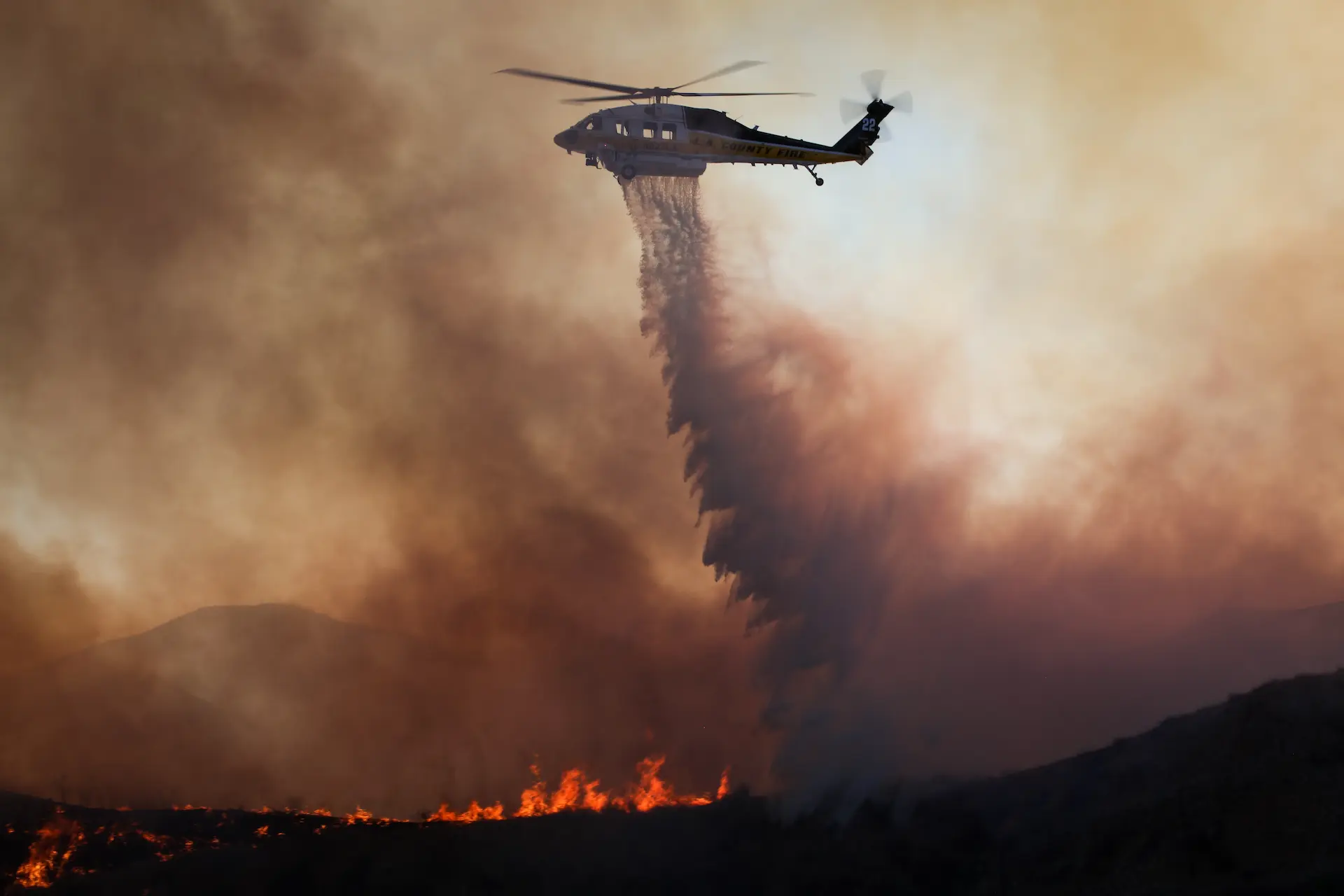
The flip side to the FAA application of the rules, one industry observer commented, is that the FAA does not give credit to anything that hasn't been shown to comply with their regulatory requirements, regardless of how much logic is put in front of them; but they will add aircraft models to an antiquated Type Certificate using the original certification basis almost indefinitely. This is discussed more later but an excellent example is the Boeing 737 and its ultimate issues with the 737 Max model.
In some ways though, the FAA has no driver to change its approach and its approach can be nuanced. For example, loggers can be carried in Restricted Category aircraft because they are deemed as performing an essential function in connection with a special purpose operation for which the aircraft is certificated or are necessary to accomplish the work activity directly associated with that special purpose (14 CFR 91.313). Using that approach, surely firefighters could be considered in the same way, but the US government agencies’ use of Public Aircraft Operations (PAO) in the USA lessens pressure on the regulator to amend the rules. By agencies using PAO, they almost totally circumvent the FAA, its rules and oversight. The problem for a country outside the USA, a country like Australia, is that their authorities tend to use the FAA (and/or EASA these days) as a benchmark and adopt the rules to provide some consistency in approach - but PAO does not exist in many jurisdictions.
Unacceptable Risk?
The belief that the Black Hawk poses an unacceptable risk to safety seems dubious at best, particularly when the helicopter is deemed safe enough to, when in military colors, fly Heads of State such as British Royalty, the President of the USA and various Prime Ministers. Yet when used by civilians, the regulator believes the helicopter can’t carry firefighters. It is also okay for civilians to be carried in military UH60s such as during natural disasters or in rescues but as soon as the aircraft wears civilian colors, it’s a no-no. Understandably, some of the reticence authorities may be derived from ensuring long term airworthiness. This is discussed later but ultimately this should not be a block to using the Black Hawk. The helicopter is fundamentally the best helicopter for the mission; it is a matter of finding a way to ensure a suitable level of continuing airworthiness to allow mission specific specialists (i.e., firefighters) to be transported in the helicopter.
The focus of this article is not about the carriage of any and all passengers in the Black Hawk, but rather the carriage of mission essential crew, namely firefighters. Just because a helicopter has civilian certification to FAR Part 29 (or EASA’s equivalent, CS 29) standards, it does not mean its relative risk to the passenger is less than a military certified helicopter. Indeed, it could be argued that the regulatory roadblocks made by the various authorities could be putting firefighter lives unnecessarily at a higher risk.
It is also acknowledged that there are many opposing opinions including the use of the current Restricted Category as a certification basis for helicopters like the Black Hawk. The reality is though, there are a lot of Black Hawks flying for a lot of operators and the record so far shows the helicopter is more than capable of being operated safely by civilian operators.
Regulatory approval can sometimes be at odds with the logic of relative risk. For example, CASA (Australia) can deem it appropriate for people to pay to joy ride in warbird aircraft because the passengers supposedly understand the risks involved and it is therefore not an ‘unacceptable risk to safety’ for people to fly in military aircraft designed in the 1940’s that have no real certification basis. Although there is no issue with the concept of people flying in warbird aircraft, the regulators have demonstrated that they are capable of developing rules that address specific requirements that also pose a risk significantly higher than what is proposed with the Black Hawk.

It is therefore apparent that there is something odd with the logic being applied when a statement is made that because the aircraft is in the restricted category, it is somehow ‘unsafe’. Although the Australian regulator couched the response in general terms, it was in response to a query about the Black Hawk and so it is clear that the implication was that the Black Hawk was not ‘as safe’ as civilian certified helicopters. The inference then is that a civilian certified helicopter is safer than a military certified helicopter. To be fair, the issue for the regulator is looking for compliance with the rules no matter how non-sensical or irrelevant to the time that those rules may be.
What is safe?
‘Safe’ is an interesting word when being used in the aviation context. Just what does ‘safe’ mean? Checking the dictionary; safe means “free from harm or risk” (Merriam Webster) or “used to refer to things that do not involve any risk” (Cambridge Dictionary). ICAO (International Civil Aviation Organization) prefers to describe safety as, “The state in which the possibility of harm to persons or of property damage is reduced to, and maintained at or below, an acceptable level through a continuing process of hazard identification and safety risk management.” The reality is that the pure meaning of ‘safe’ really can’t be applied to aviation operations because it is inherently ‘unsafe’ by the fact there is risk and as the ICAO definition alludes to, safety in aviation is about managing and minimizing risk.
So, being certified under a particular FAR or CS does not mean an aircraft is ‘safe’, rather they are a collection of standards that seek to minimise the risk of aviation activities. There are plenty of examples of certified helicopters having experienced fatal accidents that the investigations attributed (at least in part) to weaknesses in their design. Even when weaknesses are highlighted, it often takes a lot of time to get the regulator to drive or demand change.
The regulator has a significant investment in ensuring aircraft comply with certification standards so their reluctance to allow passengers in non-civil-certified aircraft is understandable. While the military certification is not related to civil certification in any way, it is a certification process that ensures aircraft are airworthy for their intended purpose.
There is enough flexibility however, in both the regulations and international agreements to allow exceptions where such exceptions are justified. It should also be highlighted that there would be challenges in ensuring operators have the appropriate airworthiness assurance systems in place, but these are not insurmountable and already there are many Black Hawks operating without incident or accident under the Restricted Category; they just aren’t allowed to carry firefighters.
There is of course a desire that helicopters don’t crash and this was the focus of the design criteria but, for a variety of reasons, like cars, they do. The real push in helicopter crash survivability came when the US military reviewed accident records from Vietnam – and that resulted in the Black Hawk and Apache design criteria.
Interestingly, the FAA itself realised that there needed to be serious consideration of survivability in an accident. In a 2015 presentation, the FAA highlighted how the number of rotorcraft accidents in the US had slowly decreased during the period 1983 to 2014 but, fatal accidents had not. Increasing the survivability of accidents became an important focus. Consequently, the change to 14 CFR 27/29.952 addressed, among other things,
drop test requirements,
fuel tank load factors,
self-sealing and breakaways,
frangible and deformable structures,
separation of fuel and ignition sources, and
rigid or semi-rigid fuel tanks.
The presentation concluded that the rate of deaths attributable to post crash fire in Part 27 helicopters would decrease from 39% to 9% following the incorporation of the crash resistant fuel systems. The Black Hawk incorporated all these elements in its design back in the mid-1970s, well before current older-design Part 29 helicopters could incorporate such design cues.
Certified to 14 CFR FAR Part 29 – what does it mean?
First a disclaimer. This article will use various helicopter models as examples of certification basis. There is no intention to criticize any helicopter model, but the examples are used to highlight differences in certification standards and to provide an understanding of what certification is.
FAR Part 29 (and its European equivalent) is a civilian certification standard for transport helicopters. This part contains airworthiness standards for rotorcraft with more than 7,000 lb (3,200 kg) maximum takeoff weight and 10 or more passengers. Those that weigh more than 20,000 lb (9,100 kg) maximum takeoff weight must be certified to additional Category A standards.

The Title 14 CFR (Code of Federal Regulations) Federal Aviation Regulations (FARs) are designed to promote safe aviation, protecting pilots, flight attendants, passengers, and the general public from unnecessary risk. FAR Part 29 defines the standards to which a designer and builder must build a helicopter to have the certified helicopter put on a civil register.
FAR Part 29 has been through many iterations since its introduction in 1965. All learned through experience, some tragic, to meet a problem not previously foreseen. This gradual evolution of standards is how systems all get better with time. The military do the same thing and much of the work the military does in establishing helicopter safety standards eventually finds its way into civilian standards. The military certification requirements, in some areas (such as flying qualities) far exceed those of the civilian requirements. Vice versa, some civilian requirements exceed those of the military.
The consequence of the amendment process is that a helicopter built to FAR Part 29 (1965) meets a very different standard to one built to FAR Part 29 Amendment 32 (1991) which meets very different standards to one built to FAR 29 Amendment 57 (2018). It’s not a lot different to the auto-industry. Compare a modern SUV to one built in 1965. The vehicles now have anti-lock brakes, seat belts, airbags, and rollover protection; all now part of the most modern standards. If a factory had continuously produced 1965 SUVs, then you could conceivably buy a “new” one today, looking all 21st century, but under its skin, it would still be a 1965 relic.
And so it is with some helicopters; they are still being manufactured as new helicopters but are essentially 1965 models – and provided the customer is fully aware of this, it is not problem, and the regulators are totally happy! The cost of the process of certifying a new helicopter is huge and because of this, many current helicopter models are derivatives of older certified originals – thus the term ‘grandfathering’ which is a provision in which an old rule continues to apply to some existing situations while a new rule will apply to all future cases. As an example, in the case of helicopter certification, the Airbus H225 appears on Puma 330J type certificate (TC) issued n 1971. The Bell 412 is on the Bell 212 TC.
Now that doesn’t mean the 225 is the same construction as a 330J, but to understand what standards were applied, a thorough reading of the certification basis is needed (and there are many subparts) - but elements of the original certification remain. Let’s take just one subpart as an example. FAR Part 29.561 (Emergency Landing Conditions) provides a fascinating read in the changing of structural standards over the past 50 years. Below are the various iterations of FAR Part 29.561.
29.561 original (1965) stated in part:
(a) The rotorcraft, although it may be damaged in emergency landing conditions on land or water, must be designed as prescribed in this
section to protect the occupants under those conditions.
(b) The structure must be designed to give each occupant every reasonable chance of escaping serious injury in a minor crash landing when--
(1) Proper use is made of seats, belts, and other safety design provisions;
(2) the wheels are retracted (where applicable); and
(3) The occupant experiences the following ultimate inertia forces relative to the surrounding structure:
(i) Upward--1.5g.
(ii) Forward--4.0g
(iii) Sideward--2.0g
(iv) Downward--4.0 g, or any lower force that will not be exceeded when the rotorcraft absorbs the landing loads resulting from impact with
an ultimate descent velocity or five f.p.s. at design maximum weight.
(c) The supporting structure must be designed to restrain, under any load up to those specified in paragraph (b)(3) of this section, any
item of mass that could injure an occupant if it came loose in a minor crash landing.
(d) Any fuselage structure in the area of internal fuel tanks below the passenger floor level must be designed to resist the crash impact
loads specified in this section, and to protect the fuel tanks from rupture, if rupture is likely when those loads are applied to that area.
29.561Amendment 29 (1989) stated:
(a) The rotorcraft, although it may be damaged in emergency landing conditions on land or water, must be designed as prescribed in this
section to protect the occupants under those conditions.
[(b) The structure must be designed to give each occupant every reasonable chance of escaping serious injury in a crash
landing when--]
(1) Proper use is made of seats, belts, and other safety design provisions;
(2) The wheels are retracted (where applicable); and
[(3) Each occupant and each item of mass inside the cabin that could injure an occupant is restrained when subjected to the
following ultimate inertial load factors relative to the surrounding structure:
(i) Upward--4g.
(ii) Forward--16g.
(iii) Sideward--8g.
(iv) Downward--20g, after the intended displacement of the seat device.
(c) The supporting structure must be designed to restrain under any ultimate inertial load factor up to those specified in this paragraph,
any item of mass above and/or behind the crew and passenger compartment that could injure an occupant if it came loose in an emergency
landing. Items of mass to be considered include, but are not limited to, rotors, transmission, and engines. The items of mass must be
restrained for the following ultimate inertial load factors:
(1) Upward--1.5g.
(2) Forward--8g.
(3) Sideward--2g.
(4) Downward--4g.
(d) Any fuselage structure in the area of internal fuel tanks below the passenger floor level must be designed to resist the following
ultimate inertial factors and loads, and to protect the fuel tanks from rupture, if rupture is likely when those loads are applied to that
area:
(1) Upward--1.5g.
(2) Forward--4.0g.
(3) Sideward--2.0g.
(4) Downward--4.0g.]
29.561 Amendment 38 (1996)
(a) The rotorcraft, although it may be damaged in emergency landing conditions on land or water, must be designed as prescribed in this
section to protect the occupants under those conditions.
(b) The structure must be designed to give each occupant every reasonable chance of escaping serious injury in a crash landing when--
(1) Proper use is made of seats, belts, and other safety design provisions;
(2) The wheels are retracted (where applicable); and
(3) Each occupant and each item of mass inside the cabin that could injure an occupant is restrained when subjected to the following
ultimate inertial load factors relative to the surrounding structure:
(i) Upward--4g.
(ii) Forward--16g.
(iii) Sideward--8g.
(iv) Downward--20g, after the intended displacement of the seat device.
[(v) Rearward--1.5g.]
(c) The supporting structure must be designed to restrain under any ultimate inertial load factor up to those specified in this paragraph,
any item of mass above and/or behind the crew and passenger compartment that could injure an occupant if it came loose in an emergency
landing. Items of mass to be considered include, but are not limited to, rotors, transmission, and engines. The items of mass must be
restrained for the following ultimate inertial load factors:
(1) Upward--1.5g.
(2) Forward--[12g.]
(3) Sideward--[6g.]
(4) Downward--[12g.]
[(5) Rearward--1.5g.]
(d) Any fuselage structure in the area of internal fuel tanks below the passenger floor level must be designed to resist the following
ultimate inertial factors and loads, and to protect the fuel tanks from rupture, if rupture is likely when those loads are applied to that
area:
(1) Upward--1.5g.
(2) Forward--4.0g.
(3) Sideward--2.0g.
(4) Downward--4.0g.
Part 29.561 provides an excellent example of improving crash-worthiness standards. So, if the type certificates of various helicopters are examined against this subpart for example, then a proper comparison (against this subpart (29.561)) can be made:
Bell 412EP (TC H4SW rev 37) complies with original 1965 standard unless crash attenuating seats installed then meets 1989 amendment for subpara b
- Airbus AS332L2 (TC H4EU rev 19) complies with original 1965 standard
- Airbus H225 (TC H4EU rev 19) complies with original 1965 standard except (c)and (d), which are the 1996 amendment
- Sikorsky S92 (TC R00024BO rev 27) complies with 1996 amendment
- Leonardo 139 (TC R00002RD rev 14) complies with 1996 amendmen
One element of the Military design standard MIL-STD-1290 required the Black Hawk to retain high mass items from presenting a risk of injury to occupants at crash loading conditions of +/-20g longitudinally, +20/-10g vertically and +/-18g laterally. Comparing Part 29 and the Mil standard shows that in this particular area, as well as others, the military certification requirements exceed elements of Part 29. This is not an attempt to ‘read across’ the two standards (military and civil) but is done to show that military standards are not a lesser requirement.
As another example, CFR 14 Part 29.954 relates to Fuel System Crash Resistance. Remember how important the FAA itself said that was to reducing fatalities in accidents? Well, most of the FAR Part 29 helicopters flying did not fully meet that standard until models such as the Leonardo 139 and Sikorsky S-92 were introduced. In this area, the Black Hawk greatly exceeds the design requirements of most Part 29 helicopters.
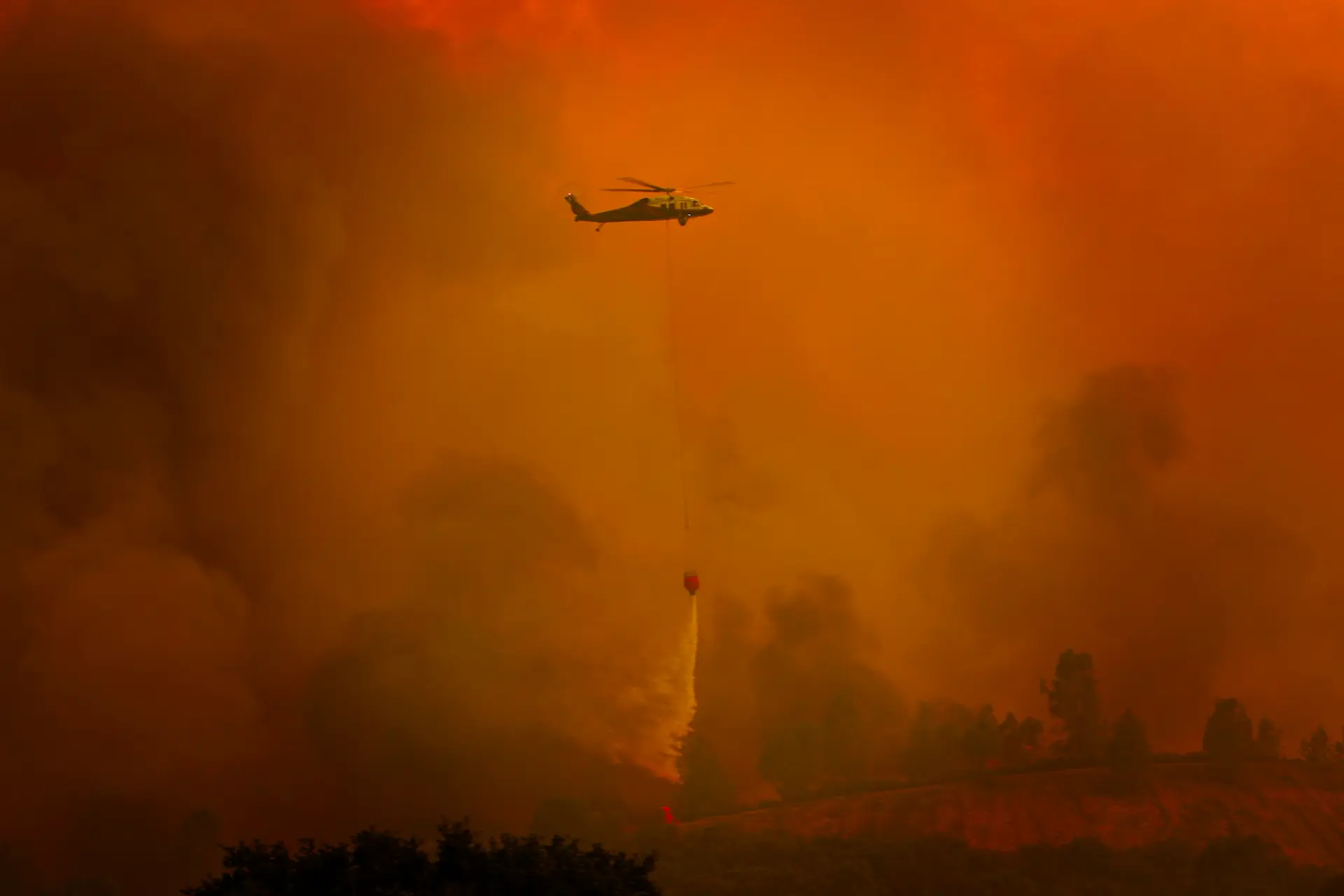
The point is, that saying a helicopter complies with FAR Part 29 and is therefore ‘safe’, is an exercise in relativism. The standards change throughout the years, as they should, and so do the relative ‘safety’ of helicopter designs. It should also be remembered that in essence, FAR Part 29 is designed to ensure (as far as practicably possible) your grandmother will get from Heliport A to Heliport B unscathed all-the-while without hurting the public.; or posing minimal risk when transporting an oil worker to and from an offshore platform. The FAR is suitable for such purposes, although despite certification, there have been some significant and spectacular failures in design safety over the years. FAR Part 29 however, was not developed with firefighting and transporting firefighters as a primary consideration.
Suitable documentation and parts assurance to support a product in the civil market is essential and the regulator’s job is to ensure that an aircraft operating on the civil register has that background support. The military does also…the challenge is the transference of an aircraft out of one system into the other.
Logic?
The perverse logic promoted by regulators is that they consider it ‘safer’ to require firefighters be transported in a helicopter that is certified to endure a 4g downward force in a crash (for example) but not in a helicopter built to endure a 20g impact. Or a helicopter that will most certainly catch fire in an impact rather than a helicopter designed and certified not to. Again, this is not a criticism of the grandfathered aircraft but a reflection on the seeming lack of logic in opposing the Black Hawk to carry mission-related personnel.
All this is analogous to saying it is okay for the firefighter to go the fire in a 1965 Chevy but not in in 1975 tank. These two vehicles are built to two very different standards and for very different purposes. Which one is better for the firefighter?
Restricted Category
Restricted Category is an airworthiness type certification. The FAA says,
“A restricted category special airworthiness certificate is issued to operate aircraft that have been type certificated in the restricted category. Operation of restricted category aircraft is limited to special purposes identified in the applicable type design. These special purpose operations include the following:
- Agricultural (spraying, dusting, seeding, and livestock and predatory animal control).
- Forest and wildlife conservation.
- Aerial surveying (photography, mapping, and oil and mineral exploration).
- Patrolling (pipe lines, power lines, and canals).
- Weather control (cloud seeding).
- Aerial advertising (skywriting, banner towing, airborne signs, and public address systems).
- Any other operation specified by the Administrator.”
Many other regulators have adopted the Restricted Category rule more or less as published by the FAA.
The FAA rule also notes:
(d) No person may be carried on a restricted category civil aircraft unless that person -
(1) Is a flight crewmember;
(2) Is a flight crewmember trainee;
(3) Performs an essential function in connection with a special purpose operation for which the aircraft is certificated;
(4) Is necessary to accomplish the work activity directly associated with that special purpose; or
(5) Is necessary to accomplish an operation under paragraph (h) of this section.
So there seems to be sufficient flexibility under Restricted Category for the regulator to take a different view from the present. However, the reason why the present view is being taken may be hinted at by Dave Downey’s comment about fear of setting a precedent or observations that the rules are not suited to today’s environment.
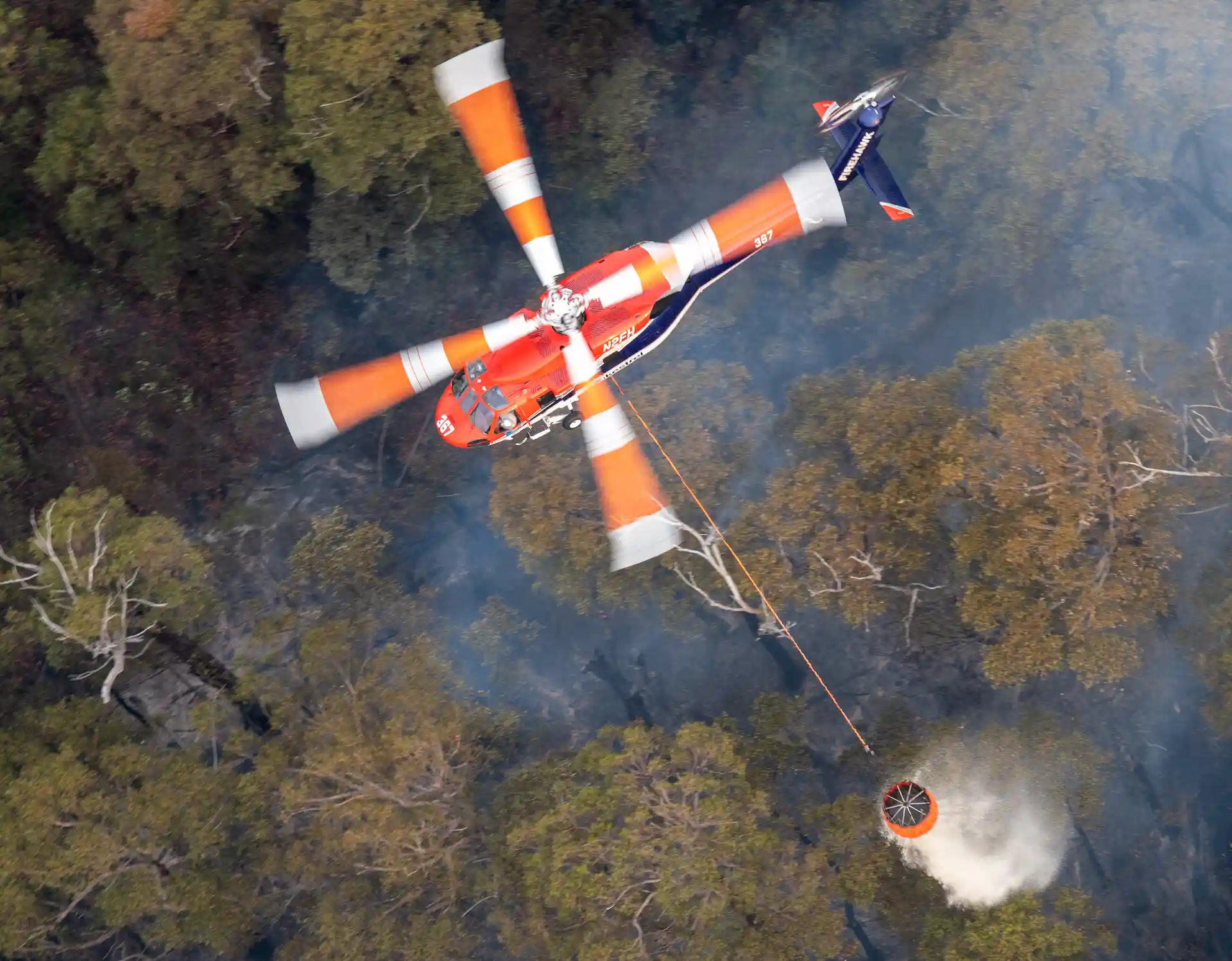
Several firefighting agencies in the USA are having standard ex-military Black Hawks converted to Firehawks with the inclusion of the extended gear and belly tank – but – the fundamental design of the helicopter has not changed. Agencies are purchasing new build S70i’s but the FAA still does not certify these helicopters under Restricted Category to carry firefighters even though there is a strong ongoing airworthiness arrangement associated with them. Discussions with some of the agency pilots show that the Black Hawk is performing extremely well in the firefighting environment; outperforming and being more reliable than some of the new transport category helicopters being used.
A question might be then, why doesn’t Sikorsky pursue civil certification for the Black Hawk? A representative at the Sikorsky stand at HAI
a couple of years ago said to me that the changes required to meet the current certification standards just didn’t make it financially
viable. But to the firefighter, if those changes were actually made at a significant cost to Sikorsky and subsequently to customers, would
they make a significant difference to the safety of the aircraft? – given it would not be required to fly over oceans in poor weather,
probably not. That’s what the S-92 or the Leonardo 139 are deigned to conduct.
It’s the Mission Dummy
To appreciate the argument that firefighters should be allowed to fly to and from the fight, it’s all about risk, even relative risk and the context of the operation. Firefighting isn’t the safest occupation, certainly it comes with quite high risk. So, it would seem a reasonable risk mitigation to get the firefighter to the location in most appropriate (safest?) lowest-risk helicopter.
Is it likely the helicopter will be transiting with firefighters over large expanses of water? No. Is it likely that the helicopter will be flying in icing conditions? Again, no. Is it likely that the helicopter will be required to perform long transits where there is no emergency landing spot? Yet again, no.
But is it likely that the helicopter may hit the ground hard in an emergency? Yes. Is it likely the helicopter may impact foliage during a landing or takeoff? Pretty well, yes. Is it likely that the helicopter will have to operate in a dusty, dirty and pretty inhospitable environment? Heck yeah.
So, one must ask, does the certification basis of FAR Part 29 directly address any of the requirements noted above? Well, no, it doesn’t because the average mission of a transport category helicopter does not include the environmental or mission context, or contemplated task of firefighting.
In fact, FAR Part 29 appears to be a very poor indicator of suitability of a helicopter to the firefighting/firefighter transport role.
In reality, the closest mission scenarios to firefighting are military operations where the helicopters are operated in inhospitable environments and are subjected to impacts from small arms fire and working close to obstructions. The military operate at night and pioneered the use of NVGs. Although the Black Hawk wasn’t built to operate in raging wildfires, it was built for battlefield survival which is not a lot different. It was born out of the US Army’s Vietnam lessons and the need for a helicopter that could get troops into and out of battle quickly and safely. Not a lot different to what is needed to fight a wildfire.
To the Black Hawk
So how FAR Part 29 certification (without references to the amendments) is being an ultimate safety measure has been highlighted as a total fallacy, what is it that is needed in a helicopter that can take firefighters to the fire fight? Again, to be fair to the regulators, an operator of the Black Hawk, as with any helicopter, should have a strong ongoing airworthiness system.
The US Army started operating the Black Hawk in 1979. Over 30 countries have or have had the Black Hawk in their military/para-public inventory with over 50 different variants built. More than 8 million hours have been flown by a fleet of more than 4000 in military service. The US Army intends that the helicopter will be operated for another 30 years.
In civilian use, Firehawk Helicopters has operated the Black Hawk as a firefighter since 1996. Since 2000, LA County has successfully and safely operated the S-70A Firehawk, which as noted before, is a standard UH-60 Black Hawk with some mission-specific modifications but the airframe is essentially the same in its civilian guise as it was when it served in the military. Timberline, Brainerd, Coulsons, Firehawk and many others have and are operating the Black Hawk safely and effectively. (Firehawk recently lost a helicopter during flight testing of a new snorkel system). There are around 60 civilian operators flying hundreds Black Hawks throughout the world.
Brian Jorgensen, Chief Operating Officer of Timberline Helicopters, is a long-time operator of the Black Hawk in various utility roles. “In my opinion the UH-60 is the most cost effective and safe aircraft for delivering firefighters and water to the fireground. We operated in Chile during the 2019-2020 season with a crew of 14 firefighters and a 780 Gallon Bambi Bucket. The customer was incredibly impressed with the helicopter and had COVID not happened we would have returned.”
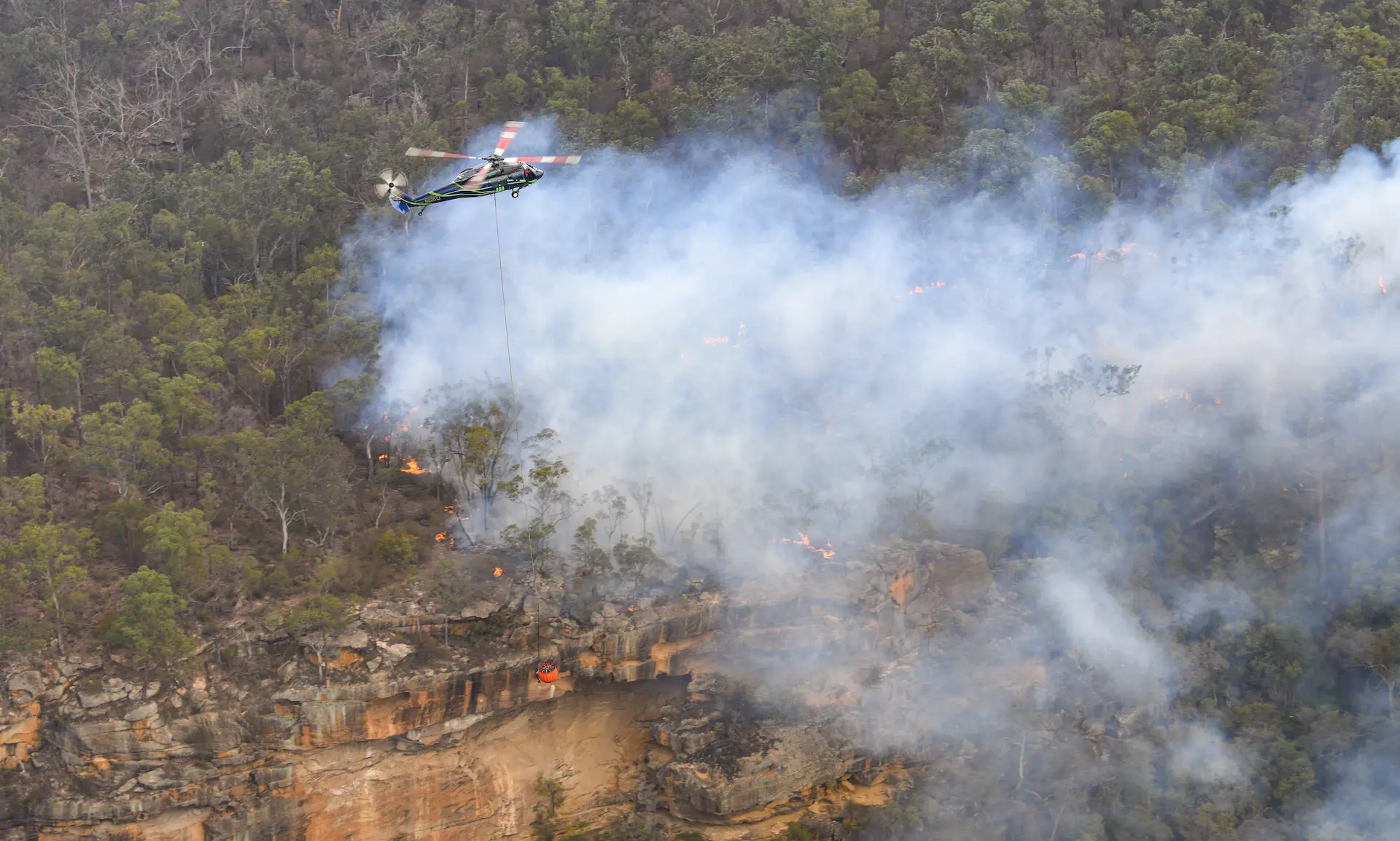
“As far as reliability we have found them to have a very high dispatch reliability. The maintenance program is designed around a 480/960-hour cycle with very simple field maintenance between phases. This allows the aircraft to operate through a normal fire season with one mechanic in the field and then go to heavy maintenance in the off season.”
Timberline’s fleet now includes six Black hawks that have accumulated well over 10,000 hours. The main advantage of the UH-60, according to Brian, is its speed and load carrying capability. “In Chile we were working for a private timber company that was working to protect its own land. With 14 firefighters on board and a bucket we routinely cruised at over 150 KTS when responding to fire calls. Once on scene our crew would go to work, and we could very quickly support them with a significant volume of water. It is amazing how easy it was typically to keep small fires small with rapid and heavy initial attack. In this role the UH-60 was really at home.”
This helicopter is obviously not an unknown, has been n service for over 30 years and is universally recognised as the most crash-survivable, battle-proven helicopter ever built. Redundancy in critical systems is built in; dual tail rotor cables, dual hydraulic servos, three electrical sources capable of powering the helicopter systems (although the APU generator can’t power the blade de-ice), three hydraulic systems, damage resistant systems and redundant flight controls. While some of the system architectures may not meet current FAR Part 29 requirements, they certainly exceed those of some of the certified FAR Part 29 helicopters presently flying.
The helicopter is fast with a Vne of up to near 195kts, something that would be advantageous for inserting (and more importantly) extracting firefighters. Crash attenuation landing gear survives a 38ft/sec (2280ft/min) landing, and the airframe will attenuate to 42ft/sec. The helicopter can be operated single pilot as the Royal Australian Navy has safely done and demonstrated since 1989 (a trained person is need in the left seat to help manipulate some controls in an emergency).
While the Black Hawk was designed and built to military standards, it and its development set the tone for much of the improvement in civilian certification standards.
Those military certification standards in some areas exceed those detailed in FAR Part 29. Many improvements reflected in the FAR Part 29 amendments introduced during the 1980s were reportedly the direct result of the work done on the Black Hawk program. NPRM 87-4, in relation to FAR Part 29-561, noted in part: “… the NTSB forwarded to the FAA three recommendations, … , to promulgate standards for improvement occupant protection in a rotorcraft crash landing. The NTSB referred to the U.S. Army Crash Survival Design Guide, USARTL TR 79-22 and to Report No. DOT/FAA/CT-85/11 for the basis of the improvement that could be achieved in normal and transport category rotorcraft. Two recommendations, A85-69 and -71, would, in part, impose crash design guidelines and multiaxis dynamic tests of seats for civil helicopters. The Army conducted research activities that led to development in the 70's of an aircraft crash survival design guide…”… “Energy attenuating seats and shoulder harnesses are an integral part of meeting these military standards.”
Continuing Airworthiness
One issue that is relevant and needs to be addressed by any operator of the Black Hawk is continuing airworthiness. Initial airworthiness was provided by the military and ongoing airworthiness is important to the continued safe operation of the helicopter.
The military build a significant and effective airworthiness system around their aircraft. Their tracking of parts, examination and analysis of fatigue and component failure, parts assurance and general maintenance is high. The military system grew around relatively inexperienced people maintaining the aircraft in comparison to those generally found in the civilian world purely because military mechanics have other roles (not just maintaining aircraft), are often attending courses and/or being posted. As regards the Black Hawk, it has been in service for over 40 years so there is no shortage of maintenance experience outside the military. Equally, there are a lot of ex-military Black Hawk pilots in the industry.
Once an aircraft leaves military service and obtains civil certification, the responsibility for continued airworthiness falls on the Type Certificate holder. The TC holder is required to provide adequate maintenance instructions to the operator, and to correct any known unsafe condition. In the USA, the FAA’s Aircraft Evaluation Group (AEG) reviews and accepts the TC holder’s Instructions for Continued Airworthiness (ICA), including the maintenance and servicing instructions, and the Aircraft Certification Office (ACO) provides the approval for any applicable life limits. Unfortunately, due to the somewhat disorganized structure within the FAA, some ACO’s approved different life limits between TCs, and some TCs were initially issued without coordinating the ICA with the Fort Worth Rotorcraft Directorate AEG.
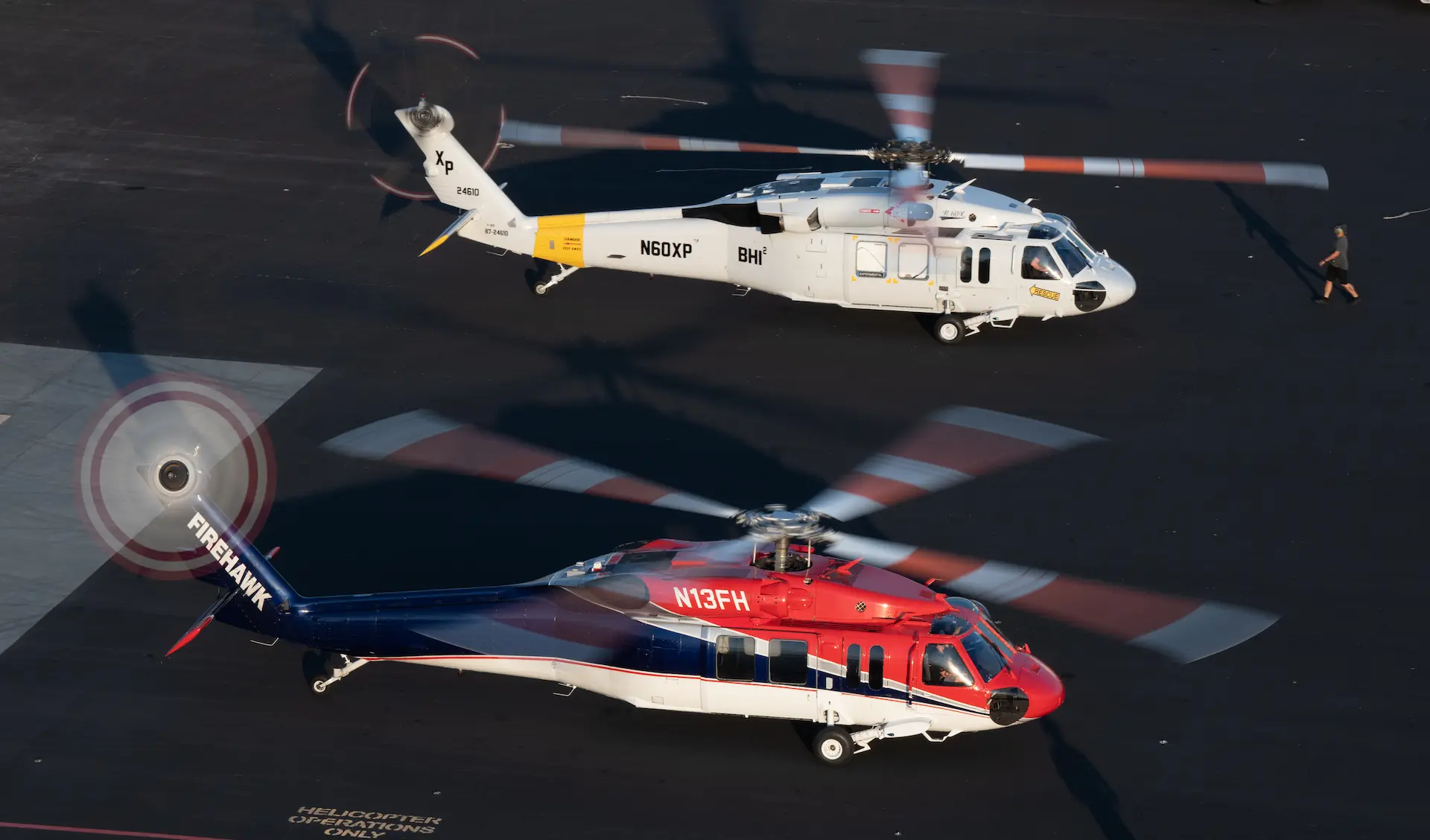
When a UH-60 is purchased through the General Services Administration (GSA) auction, there is a one-time issuance of the operating and maintenance manuals provided to the purchaser. The revision level of those manuals happens to be whatever is current in the US Army at that time. This means that someone who purchased aircraft in 2014 likely have received their manuals at an earlier revision level than a purchaser would today. There is no further support from the US military for continued technical data, so most are forced to obtain the most current information they can from whatever sources they may find. Subscriptions to the specific model publications, in the case of the Black Hawk, are available from Sikorsky for a commercial fee to all airframe owners. This includes a full update service, as well as bulletins, letters, etc. The publications are available on DVD or paper.
Several commercial services also provide detailed computer maintenance and inspection tracking services for a fee and other companies offer complete maintenance and flight crew training, including the use of simulators.
There are resources to assist operators to keep their Black Hawks airworthy.
Wrap Up
This article has explored various considerations regarding the relative ‘safety’ of the Black Hawk for carrying firefighters compared to helicopters already certified under FARs. There is no denying that the regulators have exercised their authority based on the current rules, but the question must be, are those rules still appropriate to the technology and circumstance of a helicopter like the Black Hawk?
One operator summed up their beliefs in the Black Hawk:
“Here we have an ‘ex-military’ aircraft (UH-60) with double and triple redundant systems, single-engine fly-away performance in most situations, crashworthy design parameters to protect occupants in an accident, over 10 million flight hours operating around the world in less-than-ideal conditions, and still in serial production from the manufacturer. This is against a legacy aircraft with no specific crashworthiness and/or no longer in production. There are other options out there to fulfill this role such as the Super Puma, AW159, S-92, however, each of these comes with much higher cost of acquisition and operation and does not have the history of the UH-60. In the end though it may make too much sense to use something so pedestrian as a UH-60 and instead we will spend 4 x the money for 1/2 the performance.”
As one Firehawk firefighting pilot put it, “The ship’s performance is unmatched, there is no other airframe that can fill the niche this aircraft can for the multi-mission roles within our organization.”
Ultimately, it would seem that provided the operator could provide evidence of continuing airworthiness, there is little logic based on comparative risk to not having the Black Hawk approved to carry firefighters.

Commissioner Rogers, summed up;
“Black Hawks are well known to be a tough, reliable machine and have been in service in Australia for a long time. They are faster, have the ability to cover more distance and the capacity to be able to put a larger number of our firefighters in or indeed pull out a larger number of civilians.”
“Currently all ex-military aircraft are classified as restricted and as such can only carry what is deemed to be essential crew. This would prevent firefighters being carried in the aircraft in the current restricted category arrangements. Whilst I understand the Civil Aviation Safety Authority’s (CASA) position in relation to the restricted category aircraft, I don’t believe that our intended use can be placed in the same category as those who may intend to use the aircraft for carrying passengers for commercial purposes.”
“There is a need to look at the issue case-by-case basis rather than having a blanket rule in terms of all aircraft and their use. “
“It is my opinion that you need to factor in things such as what is it being used for, who is using it (members of the public or government agencies) and whether there are appropriately briefed passengers going into that aircraft. The aircraft may still be in the restricted category, but it is restricted for firefighter insertion or rescuing people during emergencies.”
“Australian taxpayers have already paid for the aircraft, and I believe it is in their best interests that we maximise the use of the asset and continue using it for their benefit. “
In discussing the use of the Black Hawk to carry firefighters, a question was posed to me by someone close to the US certification process, “if your child was a wildland firefighter, would you want them flying in a contracted Black Hawk where the operator, pilot, maintenance, and FAA oversight were significantly less than a (USA) 135 operator, and rely solely on the Black Hawk's crash survivability to ensure their well-being?” A lawyer may consider the answer to be the Part 135 operator but knowing how the aircraft designed, built, and certified and also knowing some of the aircraft that are being used in US Part 135 operations, quite frankly, taking all considerations into account such as the operator’s reputation, I’d rather my child was in the Black Hawk.
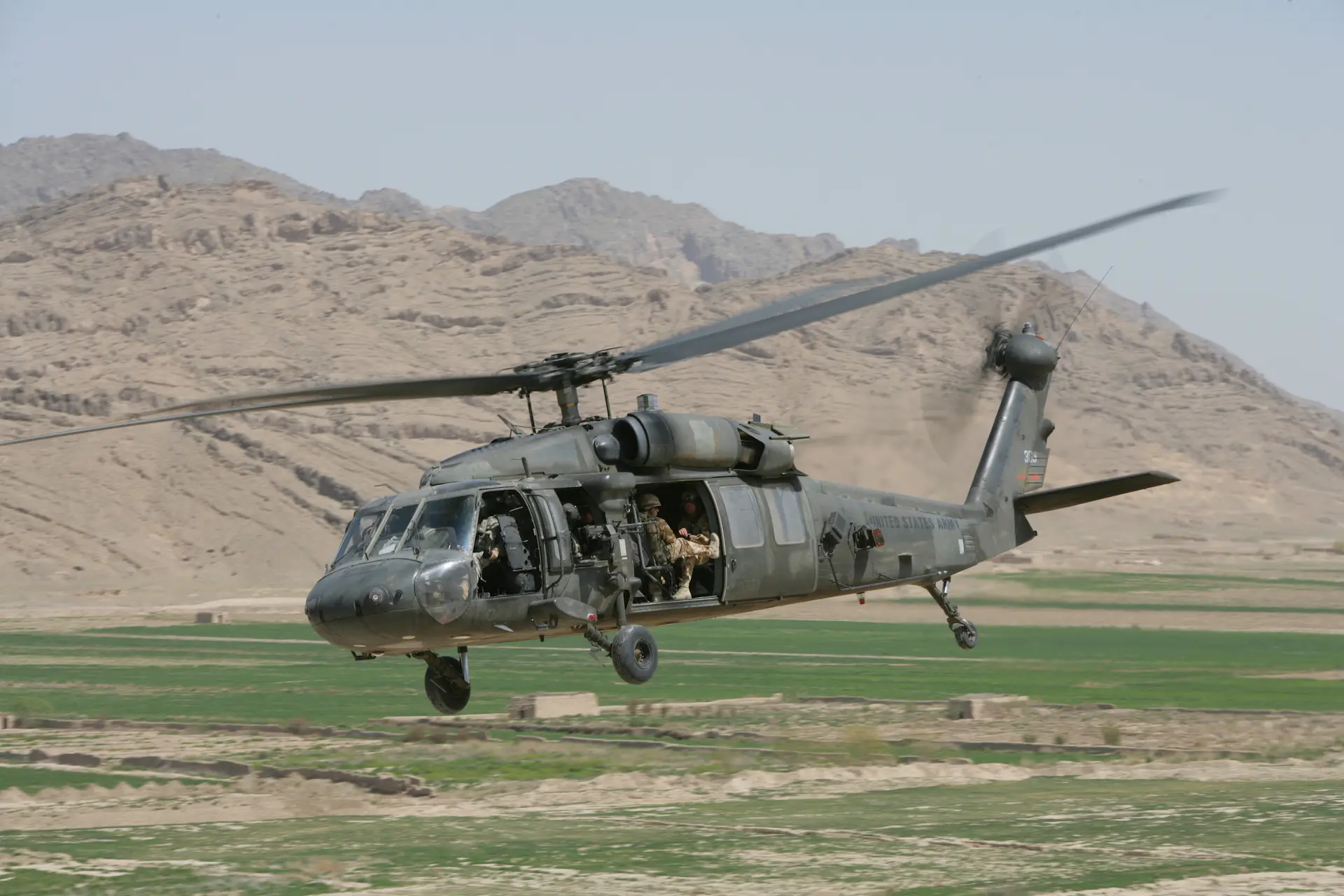
 HOME
HOME


